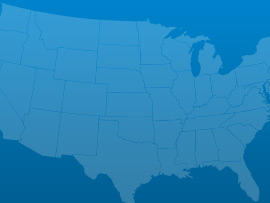The backbone flood control and drainage systems serving California cities, including channels, levees, retarding basins, dams and pump stations vary widely in condition and capacity to prevent flooding from major storms. In California’s Central Valley there is a real potential for catastrophic disaster to life and property from failure of fragile levee systems. These levees protect thousands of homes, businesses and critical community infrastructures. Current flood control funding short falls across the State, based upon available budget estimates for regional flood control facilities alone are in excess of $2.8 billion per year over the next 10 years.
 Aviation
Aviation Drinking Water
Drinking Water Levees
Levees Solid Waste
Solid Waste Transportation
Transportation Urban Runoff
Urban Runoff Wastewater
WastewaterA: Exceptional, B: Good, C: Mediocre, D: Poor, F: Failing, ?: Incomplete
Each category was evaluated on the basis of capacity, condition, funding, future need, operation and maintenance, public safety, resilience, and innovation
Aviation
191 public-use airports
Bridges
2,769 of the 24,955 bridges are structurally deficient
Bridges
$429.30 million in bridge funds came from the Federal Highway Bridge Fund in 2011
Dams
52% of the state regulated dams have an Emergency Action Plan
Dams
678 high hazard dams
Drinking Water
$44.5 billion in drinking water infrastructure needs over the next 20 years
Energy
58.881 gigawatt-hours of renewable energy every year, ranking it 2nd
Hazardous Waste
98 sites on the National Priorities List
Inland Waterways
290 miles of inland waterways, ranking it 26th nationally
Levees
13,571 miles of levees
Ports
220.8 million short tons of cargo in 2012, ranking it 3rd nationally
Public Parks
$3.6 billion of unmet needs for its parks system
Rail
25 freight railroads covering 5,307 miles across the state, ranking 3rd nationally by mileage
Roads
$17 billion a year in costs to motorists from driving on roads in need of repair, which is $703 /yr per motorist
Roads
31,827 of the state’s 175,499 public roads are major roads, and 34% are in poor condition
Schools
$25.4 billion in estimated school infrastructure funding needs
Transit
1.4 billion annual unlinked passenger trips via transit systems including bus, transit, and commuter trains
Wastewater
$29.9 billion in wastewater infrastructure needs over the next 20 years

March 03, 2017
As the President’s repeated in his address to Congress his pledge to dramatically increase infrastructure spending to the tune of $1 trillion, various Congressional Committees

March 01, 2017
On Tuesday night, President Trump addressed a joint-session of Congress for the first time in his presidency. Infrastructure was among the many issues he discussed.

February 28, 2017
U.S. motorists set a new record for vehicle miles travelled (VMT) in 2016, driving over 3.2 trillion miles, an increase of 70 billion miles from

February 17, 2017
Romantic dates, the Grammy awards and celebrating black history are not the only milestones of this week; the Oroville dam crisis in California and the